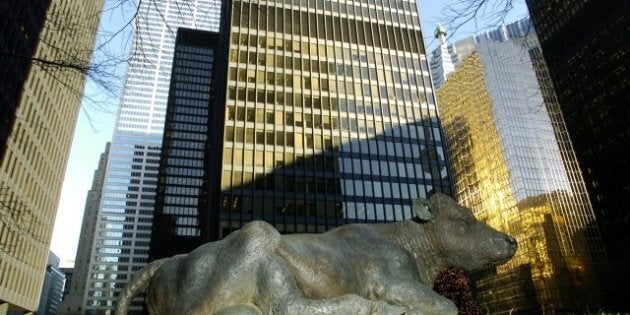
A report from the Canadian Centre for Policy Alternatives (CCPA) says Canadians were never told the real cost of a $114-billion "secret bailout'' for the country's biggest banks during the financial crisis.
It's difficult to see why the (CCPA) continues to try to make this an issue three years later but, again, they're completely missing the point. They seem to be implying that liquidity support is the same as a bank bailout, and this is not the case. These funding measures were put in place to ensure that credit was available to lend to businesses and consumers to help the economy through the recession. These funding measures were not put in place because banks were in financial difficulty.
The federal government introduced a series of measures called the Extraordinary Financing Framework (EFF) as part of Budget 2009 and through other public announcements -- there was nothing secret about it -- and the banking industry publicly acknowledged some of these programs.
But here are the facts that the CCPA has ignored: Although the financial crisis did not begin here, Canada's financial markets were impacted. During the global financial crisis, a number of large banks in other countries became insolvent, and either failed or received taxpayer-funded bailouts where the government bought part or all of those banks. For example, since the beginning of 2008, 436 banks in the U.S. have failed. Due to the crisis of confidence in global credit markets, some funding sources that banks normally relied upon became unavailable.
Canadian banks get about two-thirds of their funding from deposits, which shows the strengths of our banking system. The other one-third come from credit markets and it was these markets that were seizing up. Funding was less available. Canadian banks continued to lend and increased their lending after some non-bank lenders pulled out of the Canadian market.
While some of the funding came from Bank of Canada programs, according to the Bank of Canada, Canadian banks needed less official central bank liquidity support than their foreign counterparts. The Bank of Canada publicly outlined how this funding would be provided to the market.
Under another program, the Insured Mortgage Purchase Program (IMPP), the government of Canada bought $69 billion of insured mortgages from the banks -- only 55 per cent of the total allocated amount. Many of the mortgages were already insured and therefore, created no additional risk for the government. In instances where the banks had to obtain insurance for existing mortgages, these were low-risk mortgages. CMHC estimates that by the time the program has ended, the IMPP will have generated an estimated $2.5 billion in net revenues for the government (and therefore taxpayers).
In their report, the CCPA also compares individual banks' market capitalization with their participation in liquidity programs designed to boost confidence in the markets. It's an apples to oranges comparison as the two factors are not at all related.
It is important to remember that Canada's banks are well-regulated and the Office of the Superintendent of Financial Institutions (OSFI) carefully monitors individual banks to ensure that they remain financially stable.
The Oxford dictionary defines bailout as "financial assistance to a failing business or economy to save it from collapse." That definitely was not the case here: not one bank in Canada was in danger of going bankrupt or required the government to buy an equity stake under taxpayer-funded bailouts.